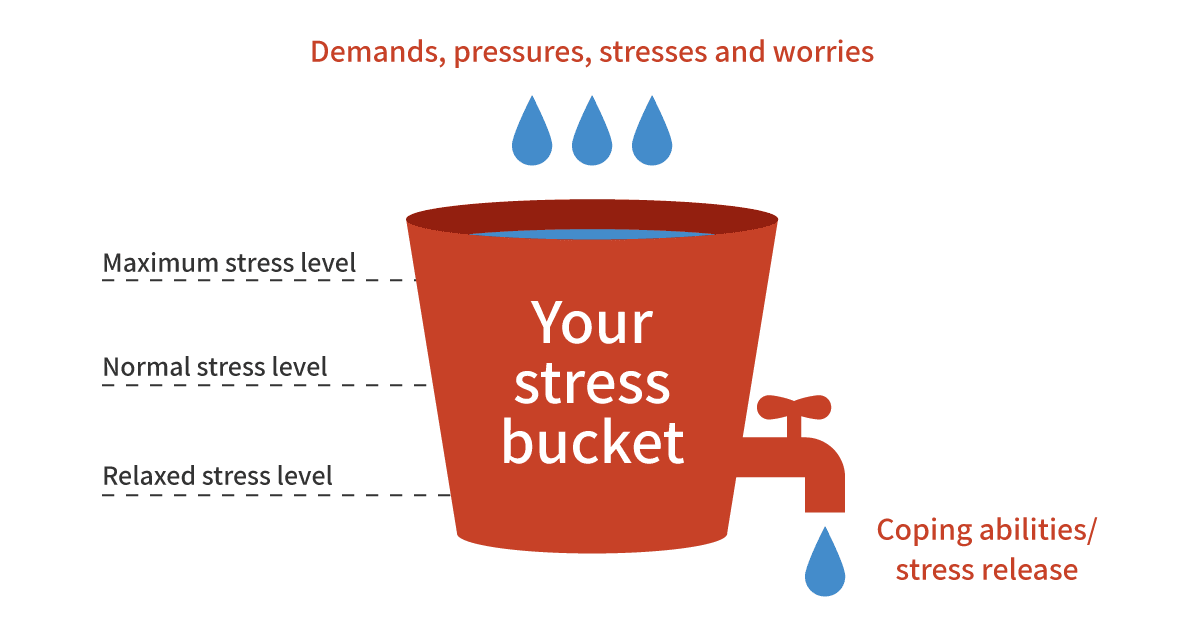The fast-paced world of QA testing and software development can lead to mental fatigue and burnout. Learn how to start your recovery from severe burnout.
Burnout and stress at work are endemic in our society, and the number of people suffering from these conditions is increasing every year. With #burnout trending on Twitter in the UK just a week before writing this article, it’s clear that the subject is topical and unlikely to be going away any time soon. A report stated recently that almost 600,000 people in the UK alone suffered from workplace stress in 2018/19.
As you’ll be aware, the QA testing and software development world is fast-paced, and often high-pressured. If not managed well, it is an environment where people can work themselves into the ground and become severely burnt out.

What is Burnout?
Burnout is a state of being where you feel run-down, listless, and void of energy or passion, where you are numb to things that once used to excite you and bring you joy. The condition has similarities with depression, and the two may go hand in hand, but where depression may not necessarily have an attributable or external cause, burnout usually does, having been brought on by high levels of continual stress. I emphasized “continual” here because remaining in this constant state is what causes the long term problems.
It’s usual for us to be able to handle a certain amount of stress because some stress is actually good. After all, it is what motivates us to get up and do things. Without any stress in our lives, we would likely end up suffering another form of listlessness brought about from not being challenged. But too much stress is a problem that makes it hard for us to cope, so severe burnout recovery involves making changes.

My Personal Burnout Recovery Story
My own experience with burnout started a couple of years ago. The story is not an exciting one or unique just to me, but after coming out the other side, I had learned a lot about both myself and the nature of the affliction. I had described in an earlier article about how to avoid burnout as a QA tester, that my story began when I founded a new startup business and was suddenly in a very different working environment to normal. I now had expanded responsibilities and a lot more unknowns and uncertainty than I had previously experienced. Like others in my team, I felt the stress and excitement of beginning something new and navigating the choppy waters of the tech startup world. While it felt exciting and different, I had a feeling that something wasn’t right with me, as I tried to carve out my role and take on new responsibilities, while figuring things out as I went along.
A few months in, I realized that I was struggling. I kept telling myself that everybody else was working hard and finding things difficult, too, so why should I be any different? Why should I complain? Eventually, this struggling feeling became a daily occurrence, and the stress was compounding, but I didn’t realize it. Eventually, it transformed into feelings of failure, where I struggled to do even the most straightforward task, becoming overwhelmed by little things and worrying that I was not in control of any aspect of my life. A feeling of fear and anxiety was ever-present, and it turned into a numbness that I just couldn’t shake.
How I Recovered from Severe Burnout
Although I still struggle with certain aspects to this day, and I have recognized and began to address that I’ve always been a bit of an anxious person, I am doing a lot better now. I have a far healthier relationship with my working process, and I understand what I need to do to take care of myself. I have made adjustments to my working hours, so they suit my life better, which has now given me time to spend on other projects I was neglecting. I have also given myself the time (and permission) to focus on other priorities and relationships in my life. I have also delegated specific tasks and responsibilities that are best done by other people.
Successful burnout recovery stories are plentiful. If you think your work life is out of balance and you are experiencing burnout, here are some pointers to help you to regain control of your life.
1. Recognize the Problem
The first step in overcoming burnout is to realize you have a problem. Once you have figured out that you cannot continue to function in your usual way, the next step is to tell someone. There is no need to make a big announcement, post it on social media, or write a blog about what’s going on if you don’t want to. It’s ok just to let one person in so they know that you’re struggling a bit. Chances are, they had already noticed there was an issue but had been unsure about how to address it, so decide to make the first move and say that you’re finding things tough. Bottling it up is the worst thing you can do. Trying to be strong and act like everything is fine when you feel like your foundations are breaking apart, is not a long term strategy.
2. Speak to Someone
The person I spoke to was a relative who was also involved in this new business. While we were always close and could usually talk about most things, I found it difficult to open up, but when I did, it felt good to offload. He helped me to ask myself what I thought would make things better. Up until that point, I thought the only way out was to go full steam ahead and plow through all the problems to burst through the other side eventually. Trust me, that tactic rarely works!
3. Therapy can Help
I also decided to try Cognitive Behavioural Therapy (or CBT), which sounds scarier than it is. CBT is a process where you learn to recognize your negative thoughts and behaviors. By becoming aware of them, you can begin to address the problems and change the way you think. Often, people who are suffering from burnout and depression can find themselves in a spiral where they feel a certain way about something (or themselves) and compound those feelings by behaving as though they were real. The goal of CBT is to break the cycle and help a person free themselves from negative thoughts and subsequent behaviors. This is easier said than done, but the first step is to help a person become more self-aware.
4. Changing your Outlook
An offshoot of CBT and behavioral change is gratitude exercises. It might sound a bit flowery or new age, but the simple act of taking the time to reflect upon what you are grateful for, which can be little things that went well in the day or big things like family or partners that you’re happy to have in your life, can change your outlook and make you a more positive and resilient person. Studies suggest that practicing positive thought and gratitude can genuinely change your brain and have lasting effects, so it’s worth spending a few moments each night before bed reflecting on three things for which you are grateful.
Summary
A combination of practical changes to my daily work life, along with some personal reflections and working on my outlook, helped me to get through a dark spell in my life. And by prising myself open enough to let somebody in and speak to them about it gave me the lifeline I needed to pull myself out.
I’ll end this article with a short quote that I heard many years ago by the New York Times bestselling author Brad Meltzer, which makes a lot more sense to me now:
“Everyone you meet is fighting a battle you know nothing about. Be Kind. Always.”
